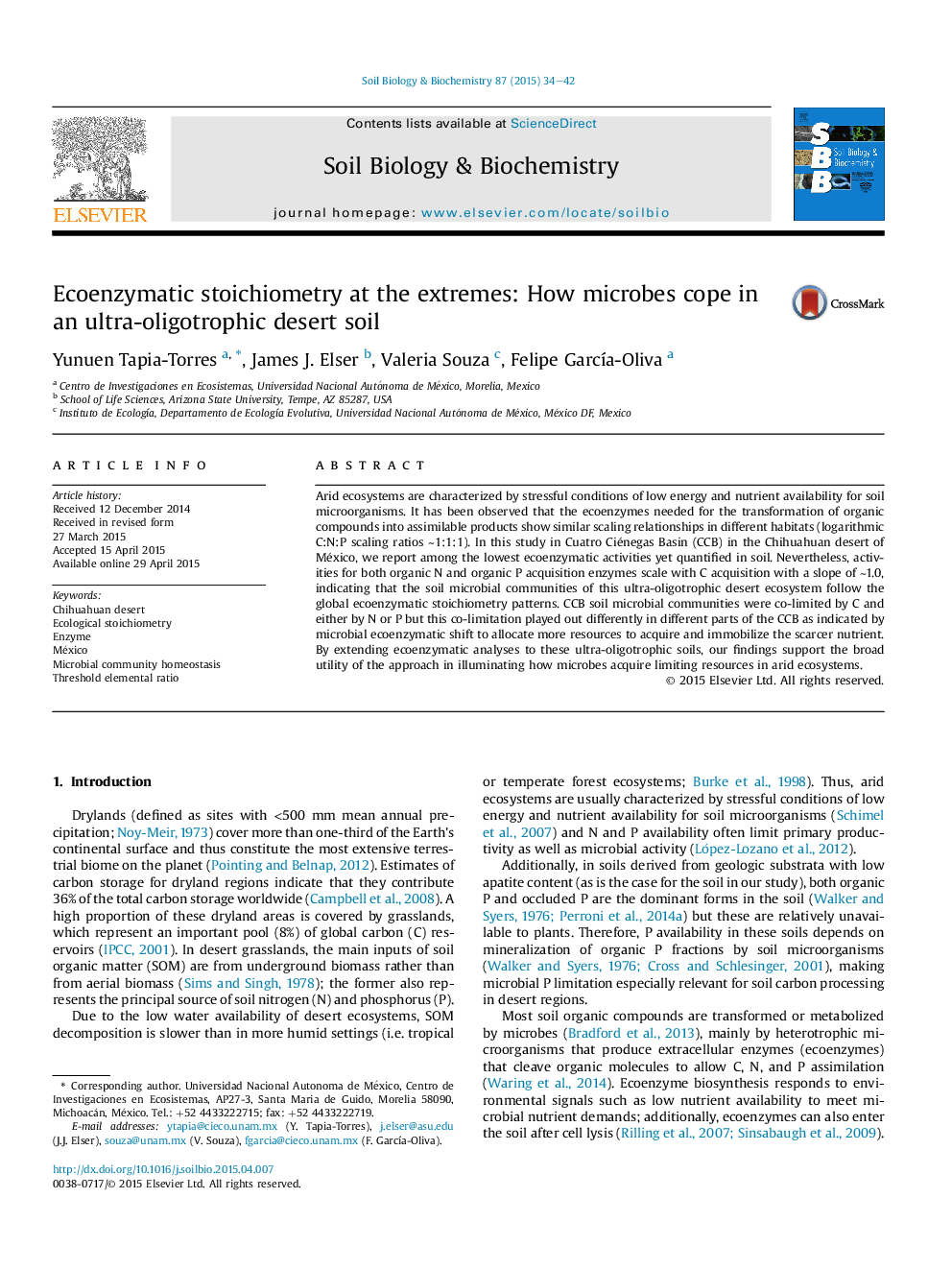| Article ID | Journal | Published Year | Pages | File Type |
|---|---|---|---|---|
| 2024498 | Soil Biology and Biochemistry | 2015 | 9 Pages |
Abstract
Arid ecosystems are characterized by stressful conditions of low energy and nutrient availability for soil microorganisms. It has been observed that the ecoenzymes needed for the transformation of organic compounds into assimilable products show similar scaling relationships in different habitats (logarithmic C:N:P scaling ratios â¼1:1:1). In this study in Cuatro Ciénegas Basin (CCB) in the Chihuahuan desert of México, we report among the lowest ecoenzymatic activities yet quantified in soil. Nevertheless, activities for both organic N and organic P acquisition enzymes scale with C acquisition with a slope of â¼1.0, indicating that the soil microbial communities of this ultra-oligotrophic desert ecosystem follow the global ecoenzymatic stoichiometry patterns. CCB soil microbial communities were co-limited by C and either by N or P but this co-limitation played out differently in different parts of the CCB as indicated by microbial ecoenzymatic shift to allocate more resources to acquire and immobilize the scarcer nutrient. By extending ecoenzymatic analyses to these ultra-oligotrophic soils, our findings support the broad utility of the approach in illuminating how microbes acquire limiting resources in arid ecosystems.
Related Topics
Life Sciences
Agricultural and Biological Sciences
Soil Science
Authors
Yunuen Tapia-Torres, James J. Elser, Valeria Souza, Felipe GarcÃa-Oliva,
